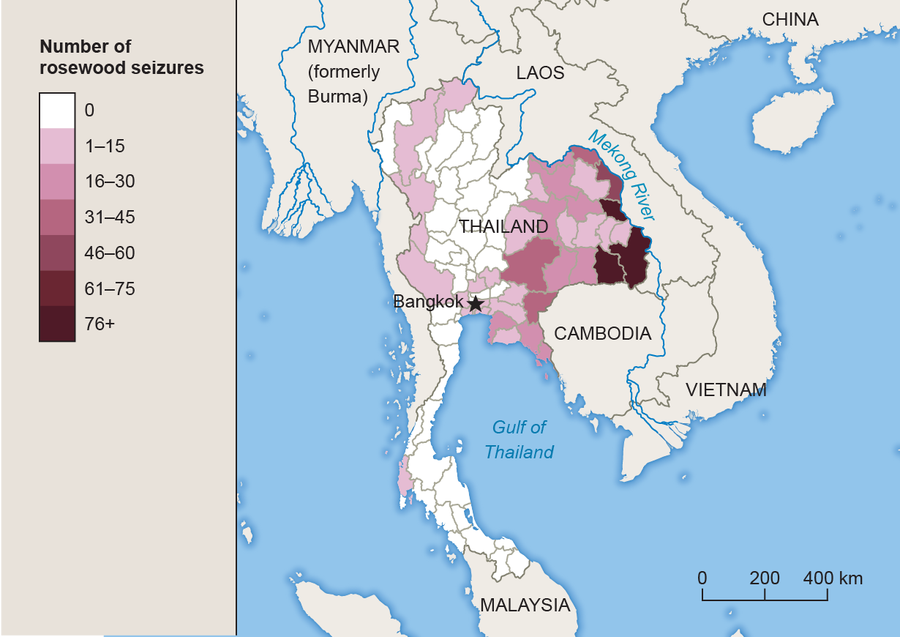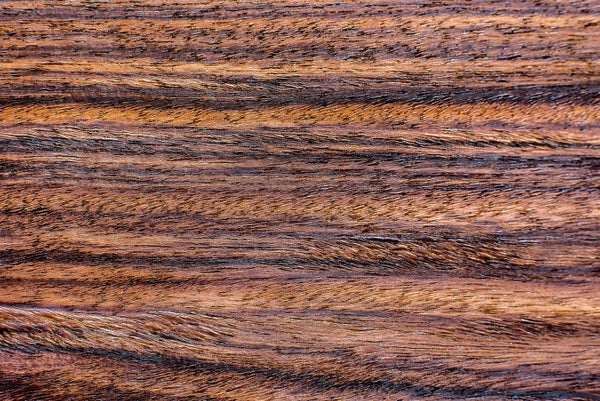Poaching of elephants, rhinoceroses and pangolins makes headlines almost every day. But tree trafficking? Not so much. Nevertheless, illegal logging is a major market; the United Nations estimates its value in the tens of billions of dollars.
Rosewood—a category that includes 33 commercial species of long-lived hardwoods that share a sweet, floral smell—is a particularly lucrative target. These trees are being poached at breathtaking rates: authorities in Thailand alone seize more than one haul of rosewood a day on average, according to research published online in March in Environmental Conservation.
“I was completely unaware of the scale of this illegal trade in Thailand,” says co-author Vincent Nijman, an anthropologist at Oxford Brookes University in England. “More than a dozen species of rosewood run a high risk of becoming extinct in our lifetime.”
On supporting science journalism
If you're enjoying this article, consider supporting our award-winning journalism by subscribing. By purchasing a subscription you are helping to ensure the future of impactful stories about the discoveries and ideas shaping our world today.
This wood has long been prized for making instruments and furniture, but China's increasing spending power has triggered escalating demand. Many of the impacted species—found in South America, Africa and Southeast Asia—are protected by law, but such measures have not stopped a growing illegal timber trade. The illicit practice affects not only centuries-old rosewood trees but also swaths of rain forest that poachers clear to access them.

Credit: Mapping Specialists; Source: “Using Online Media-Sourced Seizure Data to Assess the Illegal Wildlife Trade in Siamese Rosewood,” by Penthai Siriwat and Vincent Nijman, in Environmental Conservation. Published Online March 15, 2018
Monitoring the trade internationally is a challenge; no reliable databases exist, and related news stories and government reports are often in local languages. The latter is particularly relevant in Southeast Asia given that relatively few people outside the region speak Thai, Khmer, Vietnamese or Indonesian. “This has allowed certain countries to remain under the international conservation community's radar,” Nijman says.
Nijman's doctoral student Penthai Siriwat scoured Thai news reports for rosewood seizures and uncovered a whopping 835 separate instances from January 2014 to April 2016. Siriwat and Nijman discovered that the most significant predictor of seizures was not the number of trees in an area but proximity to an international border or port.
The findings suggest that most of Thailand's rosewood likely is destined for China. Perhaps more important, they also highlight places where authorities could most effectively curb smuggling. Tracking seizures in a real-time database would provide even more valuable information, Nijman says.
But even if such data were available, Siriwat notes that the magnitude of the illicit rosewood trade now vastly overwhelms the resources allocated to stopping it. “When groups of five rangers have to confront illegal logging groups of 40 or more, it's incredibly challenging and dangerous,” she says. “The Thai word for ‘rosewood’ is mai phayung, which sounds like the Thai word for ‘to support.’ But ironically, rosewood hasn't been receiving adequate support at all.”
